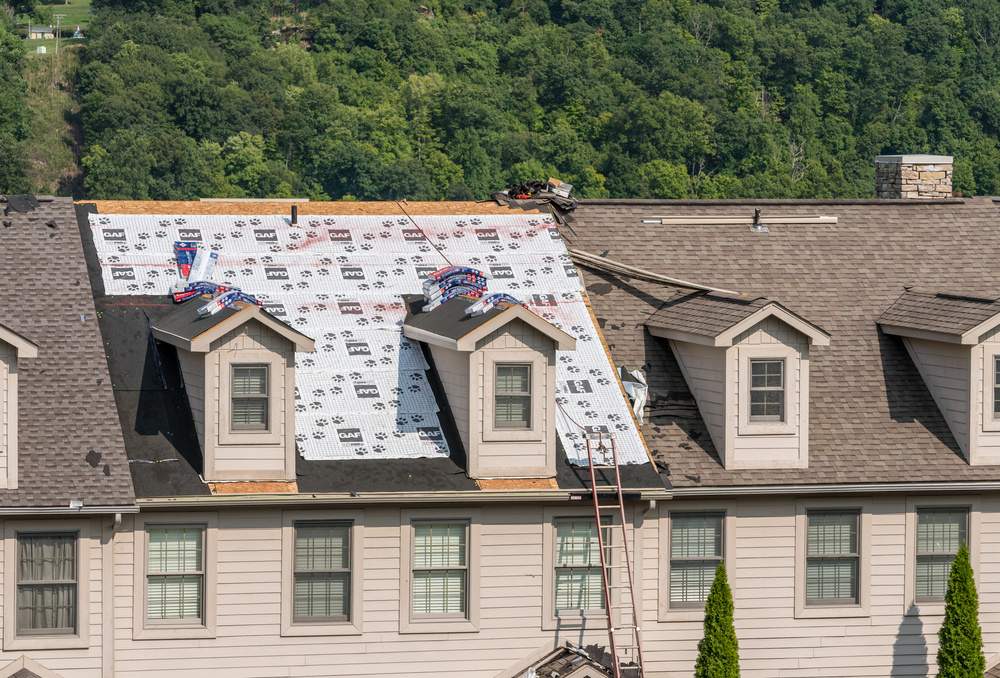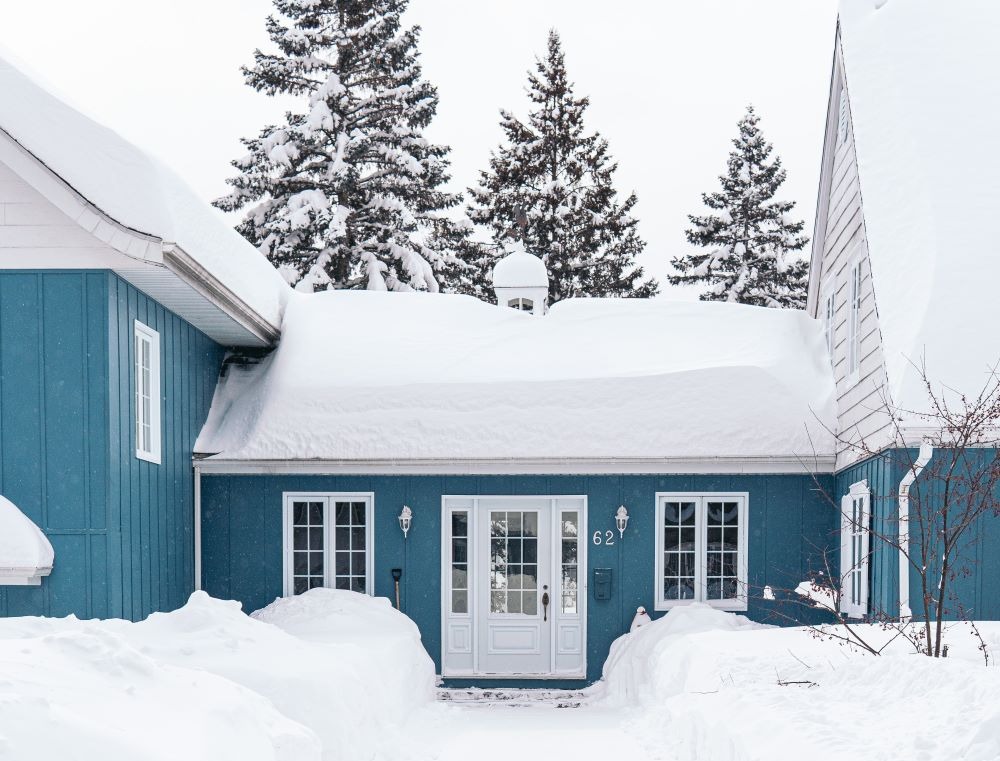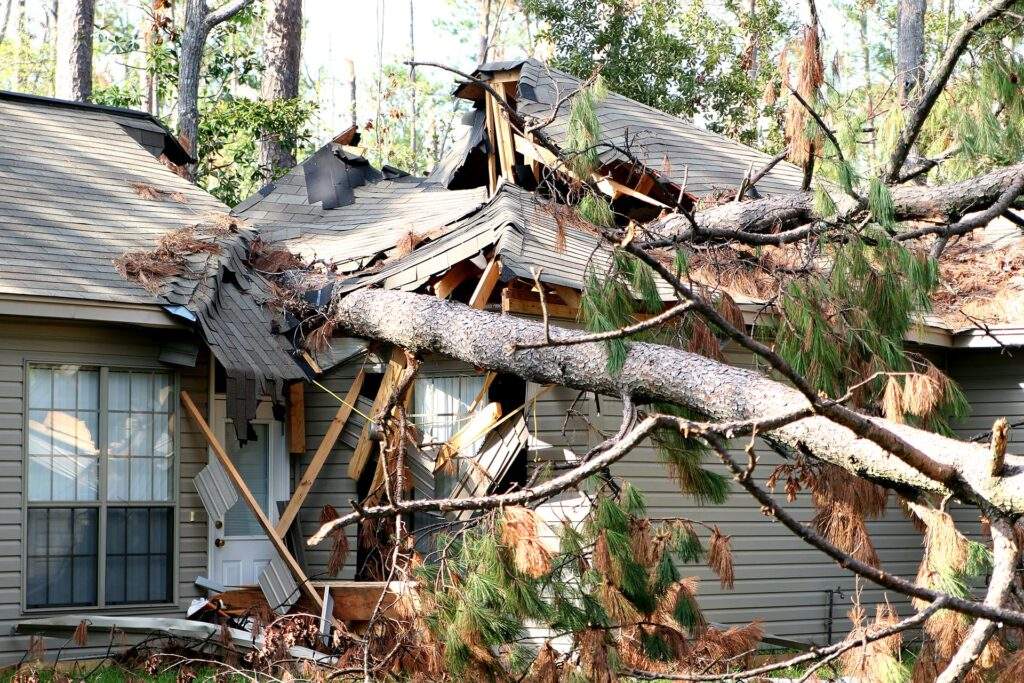Roof replacement can feel like a high-stakes gamble.
Poor workmanship, surprise expenses, or unclear communication are common worries. You’re not imagining the stress—those concerns are valid.
In Minnesota, where the weather changes faster than weekend plans, a bad roofing decision can haunt you. Leaks, drafts, or sky-high energy bills can stick around longer than the snow.
The good news? You’re not flying blind. Here are ten surprising truths to help you make informed choices and sidestep common mistakes.
Let’s make this easier.
Key Takeaways
- A roof replacement involves multiple layers working together, including underlayment, flashing, and ventilation for proper durability.
- Weather delays in Minnesota are common, so contractors must prepare with flexible timelines and clear communication plans.
- Cheap quotes often lead to hidden costs, like structural repairs and permits, so detailed estimates are essential.
- Regular maintenance, including gutter cleaning and inspections, extends your roof’s lifespan and prevents costly repairs later.
- Poor communication or contractors cutting corners signal potential long-term problems, so choose someone trustworthy and thorough.
10 Things Every Homeowner Should Know Before a Roof Replacement Starts
Every Minnesota homeowner should know ten essential truths about a roof replacement. From hidden costs to avoiding common mistakes, this list will help you prepare, ask the right questions, and confidently manage your project.
Let’s get into it.
1. It’s Not Just Shingles—It’s an Entire System
A roof is more than what you see from the curb. It’s a layered system designed to work together.
Shingles may get the spotlight, but without proper underlayment, flashing, and ventilation, they’re just decorations. Poor installation of these elements can lead to leaks, mold, and even structural damage.
Minnesota’s weather doesn’t forgive mistakes. Snow, rain, and freeze-thaw cycles demand more than “good enough.” Here’s what to ask your contractor:
- Underlayment: What’s best for your roof—traditional felt or durable synthetic?
- Flashing: How will they secure water-prone areas, like chimneys and valleys?
- Ventilation: Are they ensuring proper airflow to prevent ice dams and reduce energy waste?
Make sure your contractor explains how each layer handles Minnesota’s extremes. A well-built system isn’t just stronger; it lasts longer.
2. Weather in Minnesota Can Delay Everything
Minnesota’s weather isn’t exactly cooperative.
Rain, snow, or sudden temperature drops can put roofing projects on hold. Twin Cities homeowners often find schedules shifting unexpectedly, especially in spring or late fall.
Use this quick comparison to understand the pros and cons of each season so you can plan your project with fewer surprises.
| Seasons | Pros | Cons |
| Spring | Mild temperatures | Rain delays possible |
| Summer | Stable weather | Heat can slow work |
| Fall | Ideal conditions | Early snow risk |
| Winter | Possible but challenging | Freezing temps limit work |
The good news? A reliable contractor expects this.
They’ll plan for delays and build flexibility into their timeline. This keeps the project on track, even when the forecast doesn’t cooperate.
3. Poor Communication Is a Red Flag
Roofing projects can quickly become frustrating if your contractor leaves you in the dark.
Missed updates, surprise delays, or hidden issues popping up without warning are telltale signs of poor communication. These aren’t minor inconveniences—they’re red flags.
A good contractor won’t wait for you to ask questions. They’ll keep you informed every step of the way, from timelines to unexpected discoveries during the job.
Here’s how to protect yourself:
- Request regular updates. Daily or weekly progress reports keep you in the loop.
- Ask for a single point of contact. One go-to person for all your questions avoids mixed messages.
- Gauge their responsiveness early. If they’re hard to reach before the project starts, it won’t improve later.
A contractor who communicates respects your time and investment. Staying informed builds trust and reduces stress, which is exactly what you deserve.
4. A Cheap Quote May Cost You More Later
A low roofing quote might seem like a win, but it often hides expensive surprises. Contractors offering rock-bottom prices tend to cut corners or omit key details, leaving you to foot the bill for “unexpected” costs mid-project.
Common hidden expenses include:
- Structural repairs: Undetected damage under old asphalt shingles adds up quickly.
- Material upgrades: Changes in building codes may require higher-quality materials.
- Permits or cleanup fees: These can sneak in after work begins.
Protect yourself by requesting a detailed, itemized estimate. Ask contractors to outline contingencies for possible issues.
Remember, cheap work rarely equals quality.
5. Your Roof Plays a Huge Role in Energy Efficiency
An outdated or poorly installed roof doesn’t just lead to leaks—it can also drain your wallet. In Minnesota’s harsh winters and humid summers, a roof that isn’t energy-efficient forces your heating and cooling systems to work overtime.
Consider these energy-efficient upgrades:
- Cool roofs or reflective shingles: Reduce heat absorption in summer.
- Improved attic ventilation and insulation: Prevent heat loss in winter and reduce ice dams.
- Solar-ready roofing: Future-proof your home for renewable energy installations.
6. Your Yard Might Look Like a Disaster Zone
Roof replacement isn’t a tidy job.
Expect fallen shingles, stray nails, and plenty of dust. Your landscaping might feel under attack, and your garden gnomes? They’ll need a temporary escape.
To minimize the chaos, here’s what to do:
- Ask about landscaping protection.
- Clear your driveway.
- Check cleanup policies.
A good contractor will leave your yard looking like they were never there. A bad one? You’ll know by the nail in your tire. Plan ahead to keep the mess manageable.
7. Bad Contractors Cut Corners You Can’t See
The most dangerous shortcuts are the ones you’ll never notice—until it’s too late.
A contractor might use improper nailing techniques, which weaken shingle durability, or skip essential underlayment, leaving your roof vulnerable to leaks and ice dams. These invisible mistakes lead to expensive problems down the road.
In Minnesota, where weather extremes are the norm, these shortcuts can be disastrous. Snow loads, freeze-thaw cycles, and heavy rains demand precise workmanship and high-quality materials tailored to the local climate.
A cheap, corner-cutting job might save you a few dollars now, but it won’t hold up to Minnesota’s weather.
Choose quality over regret.
8. Roof Replacement Costs More Than You Expect (But Doesn’t Have To)
Roof replacement is an investment, and the final bill can feel overwhelming if you’re unprepared. Costs include materials, labor, permits, and the surprise expenses that pop up mid-project, like structural repairs or upgrades to meet building codes.
To stay on budget:
- Get multiple quotes. Compare estimates to identify fair pricing.
- Request an itemized breakdown. This ensures transparency about costs.
- Set aside a contingency fund. Plan for 10-15% extra for unexpected roof repairs.
9. Timing Isn’t Everything—Preparation Is
In roofing, perfect timing doesn’t exist. Minnesota’s weather is unpredictable, so focusing on preparation matters more. A well-prepared project is less likely to hit roadblocks, even when the forecast throws a curveball.
Ask your contractor how they plan for potential setbacks. A team that’s organized from the start delivers smoother, faster results, no matter when the project begins.
10. Long-Term Maintenance Protects Your Investment
Replacing your roof is just the beginning.
Without proper upkeep, even the best-installed roof won’t last as long as it should. Here’s a simple plan:
- Clean gutters seasonally. Prevent ice dams and water damage by keeping them clear of debris.
- Schedule annual inspections. Catch small issues, like loose shingles or minor leaks, before they become expensive problems.
- Check for damage after storms. High winds and hail can leave hidden trouble spots.
A well-cared-for roof protects your home—and your budget—for years.
Ready for a Roof Replacement Without the Surprises?
You’ve just uncovered the ten most surprising truths about roof replacement. Now, it’s time to use that knowledge to make confident decisions for your home.
At Allstar Construction, we get it—Minnesota’s unpredictable weather and hidden costs can make roofing projects feel daunting. That’s why we focus on transparency, quality, and preparation to keep your experience smooth and stress-free.
Need advice? Contact us today at (763) 247-4684. Talk with our local pro who understands Minnesota’s toughest conditions and what your home needs to handle them.



